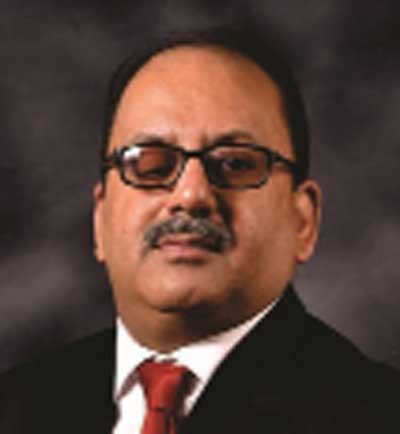Kashmir Freedom Movement exists to empower and lead the people in their struggle for peace, social justice, freedom and reunification of the state of Jammu and Kashmir.
Seventy years of Indian rule over a major part of disputed Kashmir has transformed this region into a vast garrisoned territory – and the world’s most militarised zone. More than 900,000 Indian soldiers are permanently deployed in towns and villages to control its 80 million, mostly rebellious residents.
Kashmir is never reconciled with the division of their homeland and resisted Indian rule – mostly peacefully – for four decades, in the hope that a promised UN-mandated referendum would give them a chance to determine their political future. That plebiscite never happened.
India responded with a brutal counterinsurgency military campaign that has now transformed into a permanent state of low-intensity war against a defiant population.
Tens of thousands have been killed or maimed for life. Stories of systematic torture of Kashmiris, young and old, men and women, have become part of common lore. Around 8,000 men have been disappeared; many from the numerous camps of the forces, after soldiers took them away from their homes. India has refused to investigate unmarked and mass graves of more than 7,000 unidentified people spread across many remote areas of Kashmir.
During the last three decades the Kashmiri people have mounted four major mass uprisings against Indian rule that commentators have likened to the Palestinian Intifada. Hundreds of thousands mobilised for months on end hoping to turn the world’s attention to their plight.
The uprising against Indian rule began in July 2016, sparked by the Indian forces’ killing of a young and hugely popular rebel leader, Burhan Wani. Violent clashes between protesters and government forces crippled the region for four months, and nearly a hundred civilians were killed. Thousands were injured with shotgun pellets fired indiscriminately by troops into crowds, blinding many, as the metal shards punctured their eyes. If 2010 was memorialised as the “year of killing youth”, 2016 became the “year of dead eyes” for Kashmir. But instead of initiating a political process, New Delhi intensified its counterinsurgency, pumping thousands of more troops into the already densely militarised territory.
Anger among Kashmiri people has been at a constant high for more than year and the youth feel left at the mercy of Indian forces, with the poorly trained and armed rebels, being no match for them. The anger has become more acute after organisations affiliated with Modi’s BJP have attempted to legally remove constitutional safeguards that prevent Indians from buying land in Kashmir. Seventy years on from partition and the vicious cycle in Kashmir has not broken. India is “rising” but in Kashmir there’s an uprising. India needs to allow Kashmiris to dictate the terms of their destiny and their freedom – before another partition milestone passes and Kashmiris are left with little to celebrate.
There were people dying everywhere getting massacred in every town and village, there were people being picked up and thrown into dark jails in unknown parts, there were dungeons in the city where hundreds of young men were kept in heavy chains and from where many never emerged alive, there were thousands who had disappeared leaving behind women with photographs and perennial waiting ,there were multitudes of dead bodies on the roads, in hospital beds, in fresh martyrs’ graveyards and scattered casually on the snow of mindless borders. This is the life of Kashmiri people’s continuous lockdown for the last 70 years.
No doubt, Indian fascism and discrimination against Muslims and other minorities should be exposed in our foreign politics. It is necessary to make a separate strategy and system for it. It should be a part of our strategy that we should present it as a main and separate issue because of its own dynamics. We should also talk about the rights of Indian Muslims and the other minorities. But it shouldn’t be mixed with Kashmir issue.
From the past seventy years what we saw only death and destruction. We saw our loved ones falling to the bullets of the oppressor. From the past seventy years what we saw only death and destruction. We saw our loved ones falling to the bullets of the oppressor. How can we forget the Kunan and Poshpora the two villages in Kupwara District where the women of the whole village were raped by men in uniform in the dead of the night. Even elderly women of 85 years of age were not spared. This gruesome incident is one of the darkest chapters of Kashmir conflict.
The Himalayan Mountains know best what happened on the cold dark night of February 23, 1991, deep in the Kashmir Valley. But is it because what these mountains had seen occurred nearly three decades ago, in two non-descript villages, that India and the rest of the world today choose ignorance and indifference?
The Kunan and Poshpora incident was an alleged mass-rape that occurred on February 23, 1991, when unit(s) of the Indian security forces after being fired upon by militants, launched a search operation in the twin villages of Kunan and Poshpora, located in Kashmir’s remote Kupwara District. The residents of the neighbourhood stated that militants had fired on soldiers nearby, which prompted the operation. Some of the villagers claimed that many women were allegedly raped by soldiers that night.
The First Information Report filed in the police station after a visit by the local magistrate reported the number of women alleging rape as 23. However, Human Rights Watch asserts that this number could be between 23 and 100. These allegations were denied by the army. The government determined that the evidence was not sufficient and issued a statement condemning the allegations as terrorist propaganda.
While the Government’s investigations into the incident rejected the allegations as ‘baseless’, international human rights organizations have expressed serious doubts about the integrity of these investigations and the manner in which they were conducted,
Continued on Page 5…
Sign in
Welcome! Log into your account
Forgot your password? Get help
Password recovery
Recover your password
A password will be e-mailed to you.




